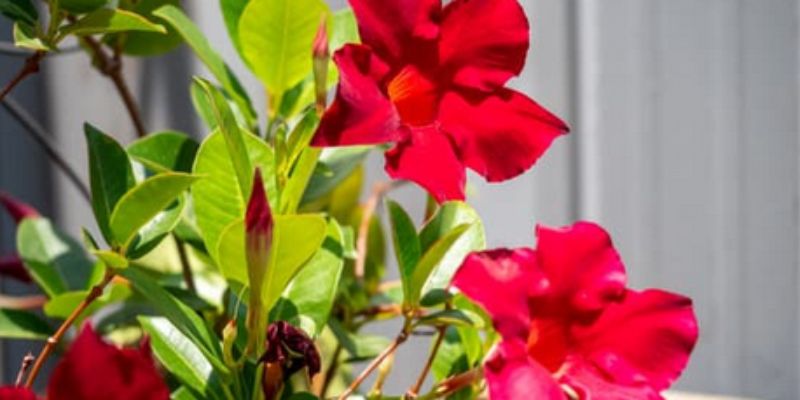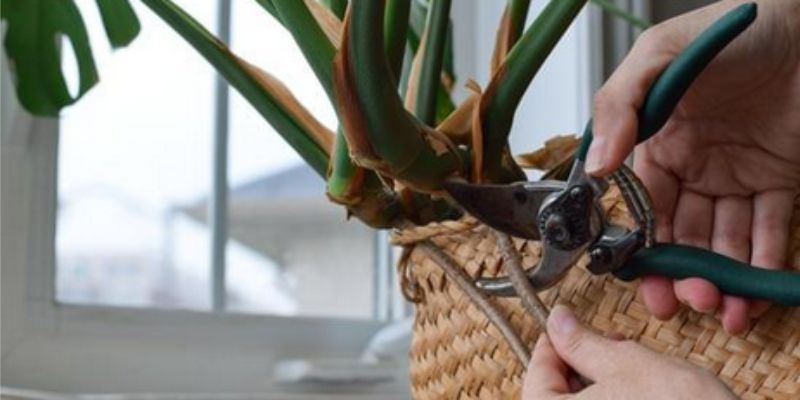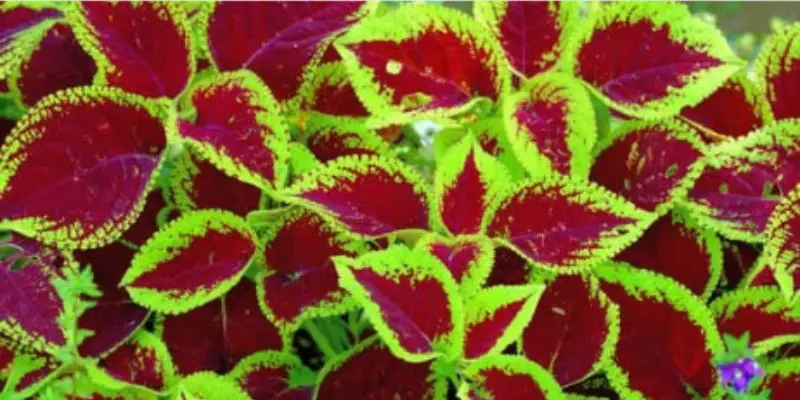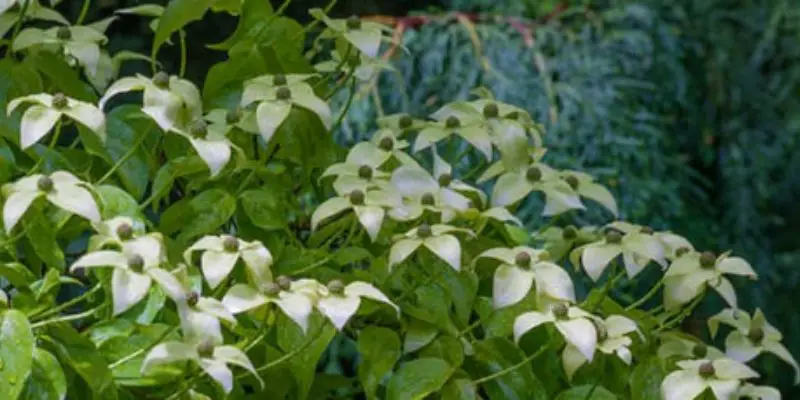With their colorful flowers and glossy leaves, mandevilla vines make beautiful tropical additions to gardens and containers. However, without proper pruning they can become unruly and unproductive. By learning how to prune mandevilla, you can maintain their shape, encourage more blooms, and improve their overall health.
An Introduction to Pruning Mandevillas
Mandevillas are fast-growing twining vines needing pruning to:
- Promote bushy, compact growth habit rather than legginess
- Maximize flower production by pruning after blooming
- Remove unsightly old wood and spent flower stems
- Control size and shape when used in containers
- Allow light penetration by thinning congested growth
- Rejuvenate overgrown plants by cutting back stale branches
- Direct growth outward rather than growing inward
With their energetic growth, mandevillas need frequent pruning but respond well by producing more flowers.
When to Prune Mandevilla Vines
To avoid removing developing buds yet allow regrowth before frosts, prune mandevillas:
- In early spring after the chance of frost has passed
- After flowering cycles in mid to late summer
- To lightly shape only, in early fall
Avoid heavy winter pruning that exposes vines to cold damage. Time pruning with local seasonal conditions for best results.
Tools Needed for Pruning Mandevillas
Having the proper tools makes pruning mandevillas quicker and easier:
- Bypass hand pruners for smaller stems
- Loppers for thicker mandevilla growth
- Hedges shears for quickly shaping formal plants
- Pole pruners or shears to reach top growth without a ladder
- Sharp sterile pruning blades that make clean cuts
- Garden disinfectant for sanitizing tools
- Compost bin or yard waste bags for removing cuttings
With quality tools, you can precisely shape mandevillas for enhanced beauty and flowering.
How to Prune Mandevilla Vine
Follow these steps when pruning established mandevilla vines:
1. Sterilize pruning tools in disinfecting wipes or solution.
2. Remove any dead, damaged or diseased stems back to healthy wood.
3. Cut back overgrown shoots above outward facing leaf nodes.
4. Thin congested areas to open up the center of the vine.
5. If needed, cut back entire vines by 1/3 their length to rejuvenate.
6. Prune side shoots off of lower vines to focus growth upward.
7. Continually sanitize tools between cuts to prevent bacterial spread.
8. Apply blooming fertilizer to stimulate flowering on new growth.
With the right technique, pruning invigorates mandevilla vines for renewed flowering.
Pruning Newly Planted Mandevilla Vines
New mandevilla vines require careful pruning to develop proper form:
- Remove any flowers or flower buds at time of planting to direct energy into establishment.
- Prune leggy stems back by half their length to encourage basal branching.
- Retain several upper buds on shortened stems to allow flowering on new growth.
- Continue lightly pinching back long new shoots throughout the first summer.
- Avoid heavy pruning that overly stresses new transplants. Just tip prune.
- Water and fertilize diligently to aid recovery from pruning.
With careful pruning starting at planting time, new mandevillas quickly become bushy, floriferous vines.
Using Pruning to Shape Potted Mandevillas
Container mandevillas require frequent shaping:
- Prune lateral shoots often to encourage compact, bushy plants.
- Remove vertical shoots that extend well above desired plant height.
- Cut back outer perimeter shoots to keep growth compact and prevent sprawling.
- Thin interior small shoots and leaves to allow light penetration.
- Prune throughout the season as needed to maintain ideal size and shape.
Frequent tip pruning is key for shapely potted mandevillas with abundant flowers.
Cutting Back Mandevilla After Flowering
Pruning mandevillas after blooming encourages more flower production:
- Inspect vines after flowering ends and locate old spent bloom stalks.
- Use hand pruners or loppers to cut back each bloom stalk to the point of origin.
- Remove only the old flowering growth, not actively growing green stems.
- Clean cuts speed wound closure. Avoid jagged snapping of stems when possible.
- New flower buds emerge on current season’s growth following pruning.
Proper post-bloom pruning rejuvenates vines for their next flowering cycle.
Training Mandevilla Vines to a Trellis or Arbor
Mandevillas require pruning and training to climb neatly on supports:
- Direct new growth to the support structure. Remove shoots growing away from the trellis.
- Tuck wayward shoots back into place using plant ties or clips if not too stiff.
- Pinch back fast vertical growth to encourage lateral branching against the support.
- Cut back side shoots to concentrate growth onto main climbing stems.
- Remove criss-crossing and intertwined stems for visually simplified growth on the support.
With attentive training, mandevillas climb trellises and arbors beautifully.
Rejuvenating Overgrown Mandevilla Vines
Neglected, overgrown mandevilla vines become woody and flower less. Here is how to rejuvenate old plants:
- Prune away small interior branches and leaves to allow light penetration.
- Use loppers or pruners to cut back old woody stems to just above the base.
- Remove thin shoots emerging from old stems competing with new shoots.
- Water and fertilize to encourage fast regrowth.
- Train new shoots upward against supports or outward along fences or arbors.
- Continue pruning old wood and training new growth until plant fully recovers.
Even very overgrown mandevilla vines can be pruned back to regain their vigor.
How to Prune Mandevillas – Common Mistakes to Avoid
Some common pruning errors lead to lackluster mandevillas. Be sure to avoid:
- Pruning off developing flower buds before blooming finishes
- Leaving unsightly stubs when cutting back vines
- Failure to remove spent flower stems after blooming
- Allowing unchecked upright growth rather than lateral branching
- Overpruning roots when repotting – trim only circled or damaged roots
- Not supporting vines after hard pruning
- Pruning too late in fall leaving vines exposed to cold
With proper technique, your mandevilla vines will thrive season after season.
Conclusion
While mandevilla vines grow rampantly in warm conditions, some pruning is needed to maximize their flower production, control their size, and enhance their tropical beauty. By cutting back vines after flowering, thinning congested growth, training vines properly along supports, and preventing leggy growth, mandevillas become bushier, neater, and more floriferous plants. Give your mandevillas a trim before growth resumes in spring and they will reward you with vivid colorful blooms beautifying your garden all season long.
Also read:
Best Electric Hedge Shears – Top 6 Reviews and Buying Guide
7 Best Top Rated Electric Hedge Trimmers – A Detailed Buying Guide

Michael Glenn is a certified arborist and horticultural expert with over 15 years of experience in the landscape industry. His passion for plants and trees has led him to become a sought-after authority on pruning and trimming techniques. Glenn’s in-depth knowledge of proper pruning methods, timing, and tools has helped countless homeowners and professionals maintain healthy, aesthetically pleasing gardens and landscapes.
In addition to sharing his pruning expertise through practical tips, step-by-step guides, and expert advice, Glenn is also a respected author of pruning tool buying guides. His comprehensive reviews and comparisons ensure readers can make informed decisions when investing in quality loppers, pruning shears, saws, and other essential equipment. With a deep understanding of plant biology and sustainable practices, Glenn’s writing empowers audiences with the knowledge needed to properly care for green spaces.





